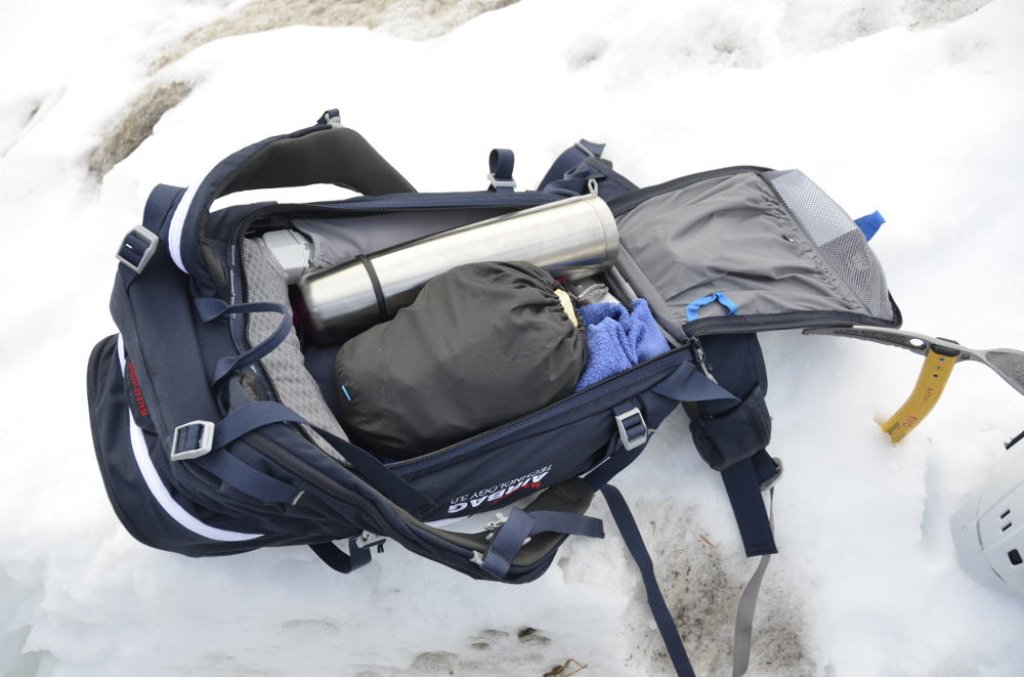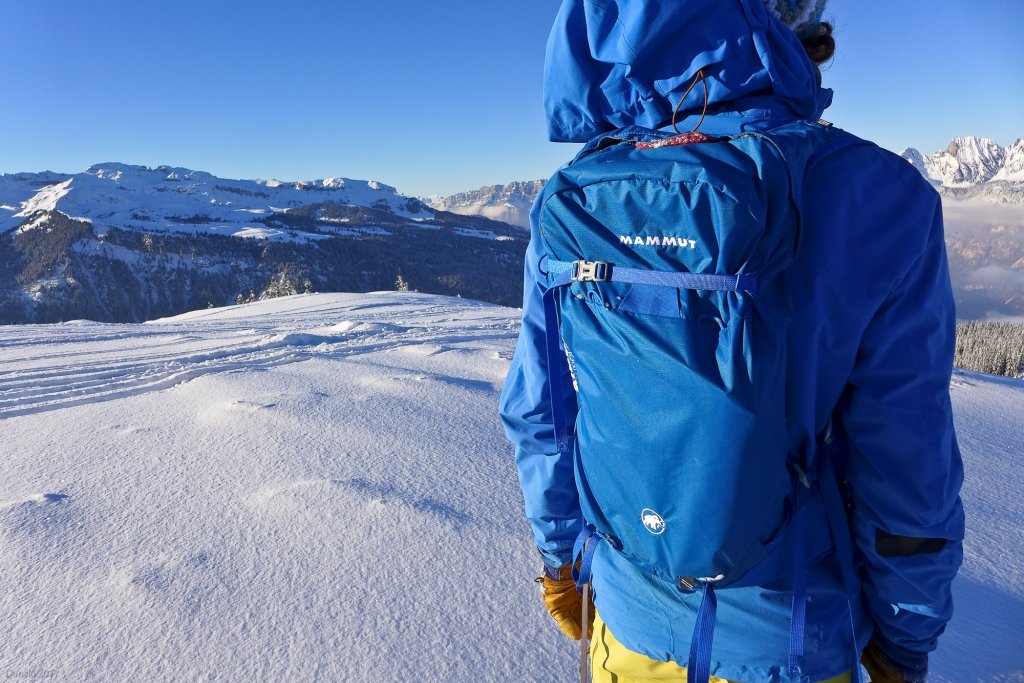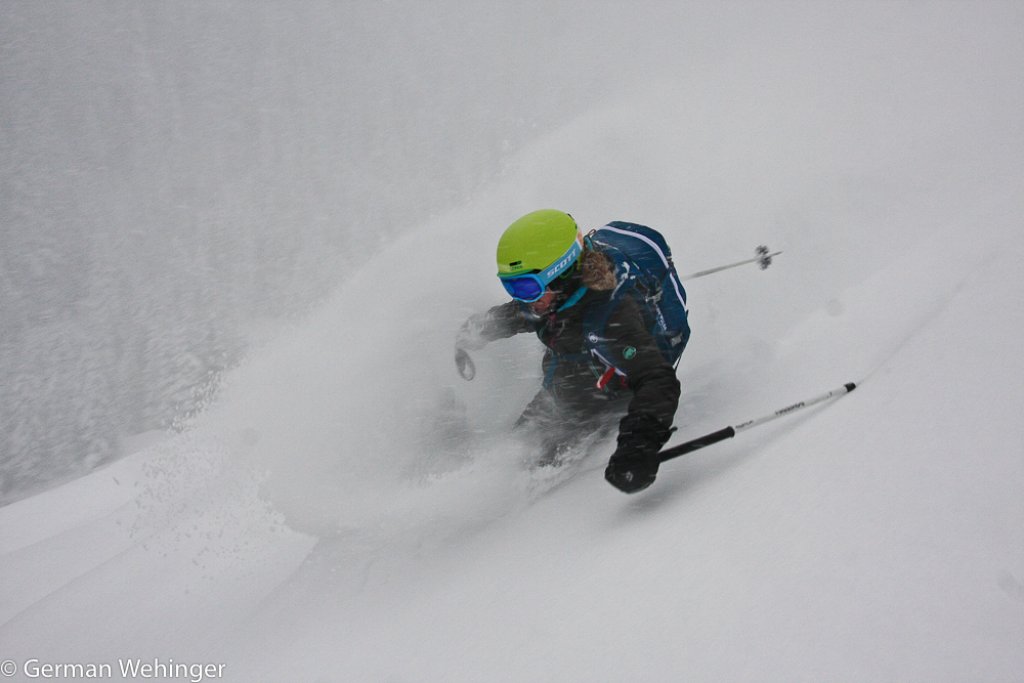As the name suggests, the airbag can be removed so that the backpack can also be used for other activities. The Pro also offers a pack size of 33 l and is relatively light at just 2590 g, making it suitable for multi-day ski tours and ambitious ski tourers.
Tester & test conditions
Whether freeriding, ski touring, alpine touring or in summer for biking or hiking - a backpack has been part of my almost daily routine for ten years. However, the Mammut Pro short RAS is my first airbag backpack. Until now, airbag systems have unfortunately been too heavy and too bulky for me. I also felt restricted in my freedom of movement, especially in the head area. I am 1.76 cm tall and weigh approx. 64 kg in size M. I have been using the backpack for the season so far.
First impression
The airbag looks like a "normal" backpack. The navy blue color is simple and beautiful. The material is robust and less susceptible to dirt. At first glance, you can't even tell that it's an airbag backpack.
On my first inspection, I discover countless zippers, straps and fastening options. I am immediately curious and start looking to see which one is for what and what is hidden behind what. In previous years, I was always dissatisfied with poorly thought-out and annoyingly attached helmet holders, ski mounting systems, etc.. So I'm curious to see how it will be this time!
Zips, straps, compartments, pockets and co
The only zipper in white leads me directly to the main compartment. The zipper can be opened halfway through the backpack - now I can also see the airbag system and its attachment inside. It can be easily detached in two places with simple hand movements so that the backpack can be used for another activity if necessary. The RAS system is small and well integrated into the backpack. With a few tricks, it doesn't get in the way of organizing my gear later on.
I can access the main compartment again via a zipper on the back. When lying down, the backpack can be opened completely and the entire volume can be used to its full potential. On the inside of the main compartment, there is a small compartment with elasticated straps, as is common in most backpacks. I stow bars, sandwiches or a headband there. The instructions for inserting and operating the cartridge are sewn into this compartment on a "note".
A separate mesh pocket with zipper and key attachment is located above this.
There is a separate front compartment in front of the striking white zipper to the main compartment. This is discreetly yet visibly labeled "Safety Pocket". The compartments for shovel and probe are hidden here, which I stow directly there. The adjustment for the diagonal ski holder is also located here.
On the red inside, Mammut has printed packing instructions, life-saving emergency measures and information about the Alpine emergency signal. Features that I like and that can save lives in an emergency. I also discover a small pocket on the waist belt, a helmet holder that I really like, ice axe and pole holders and a softly lined goggle compartment, as well as attachment options for skis and snowboards. Everything is always provided with a small, discreet picture - so there's no need to search and fiddle around.


















